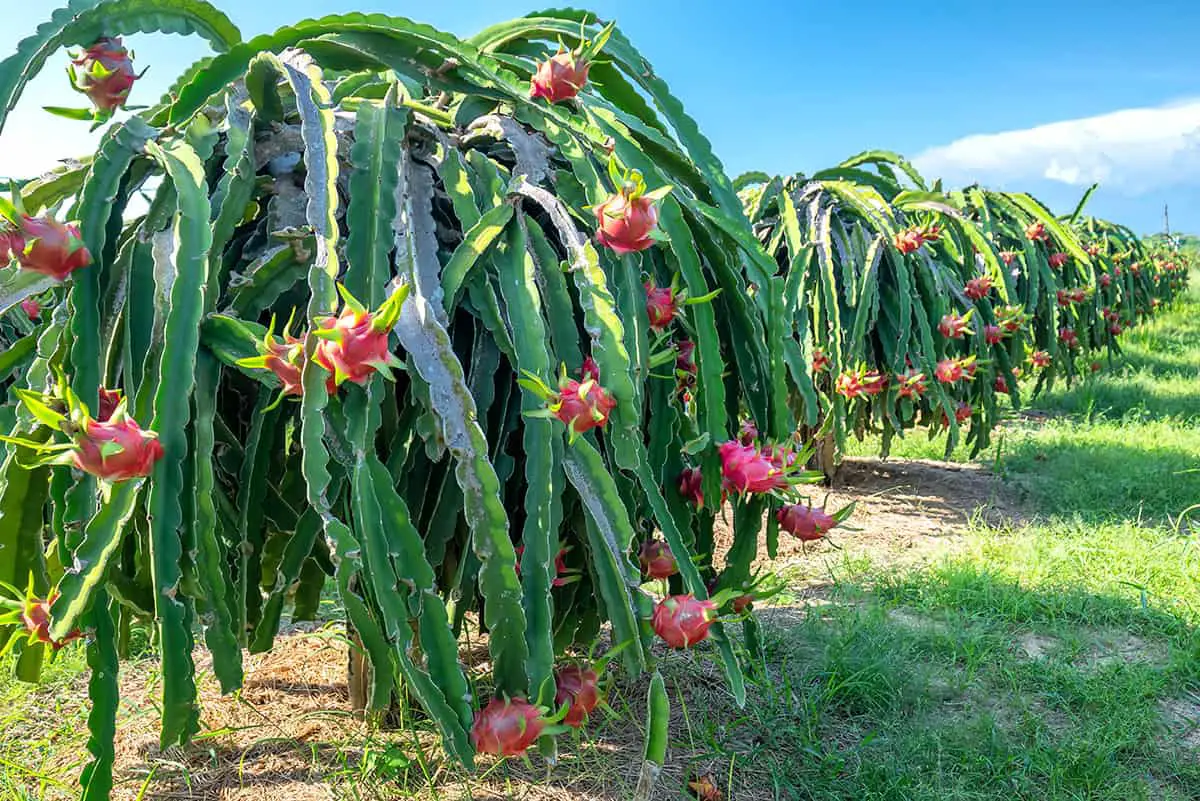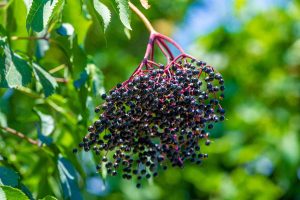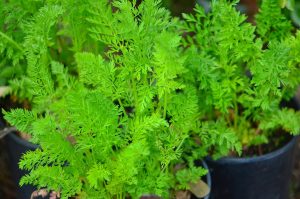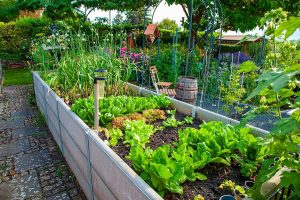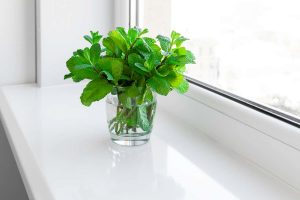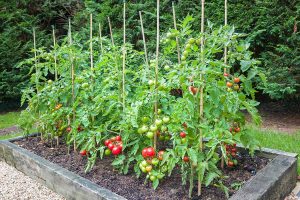The Dragon Fruit plant, with its striking, sweetly-flavored fruits and unique cactus-like appearance, can be a rewarding addition to your garden. If you’ve faced issues like root rot or lack of flowering in the past, this guide is here to help. Here, we will provide detailed instructions on selecting the right cactus soil, setting an effective watering schedule, and ensuring proper pollination.
| Common Name | Dragon Fruit |
| Botanical Name | Hylocereus spp. |
| Family | Cactaceae |
| History & Origin | Native to Central and South America |
| Plant Type | Perennial cactus |
| Mature Size | 10-20 feet long |
| Sun Exposure | Full sun to partial shade |
| Soil Type | Well-draining, sandy or loamy soil |
| Soil pH | 6.0-7.5 |
| Temperature | 65-85°F |
| Watering | Moderate; let soil dry between waterings |
| Fertilizing | Monthly during growing season |
| Bloom Time | Summer |
| Flower Color | White, large, fragrant |
| Hardiness Zone | 10-11 USDA |
| Toxicity | Non-toxic to humans and pets |
| Common Problems | Root rot, pests like aphids, mealybugs |
Table of Contents
Light
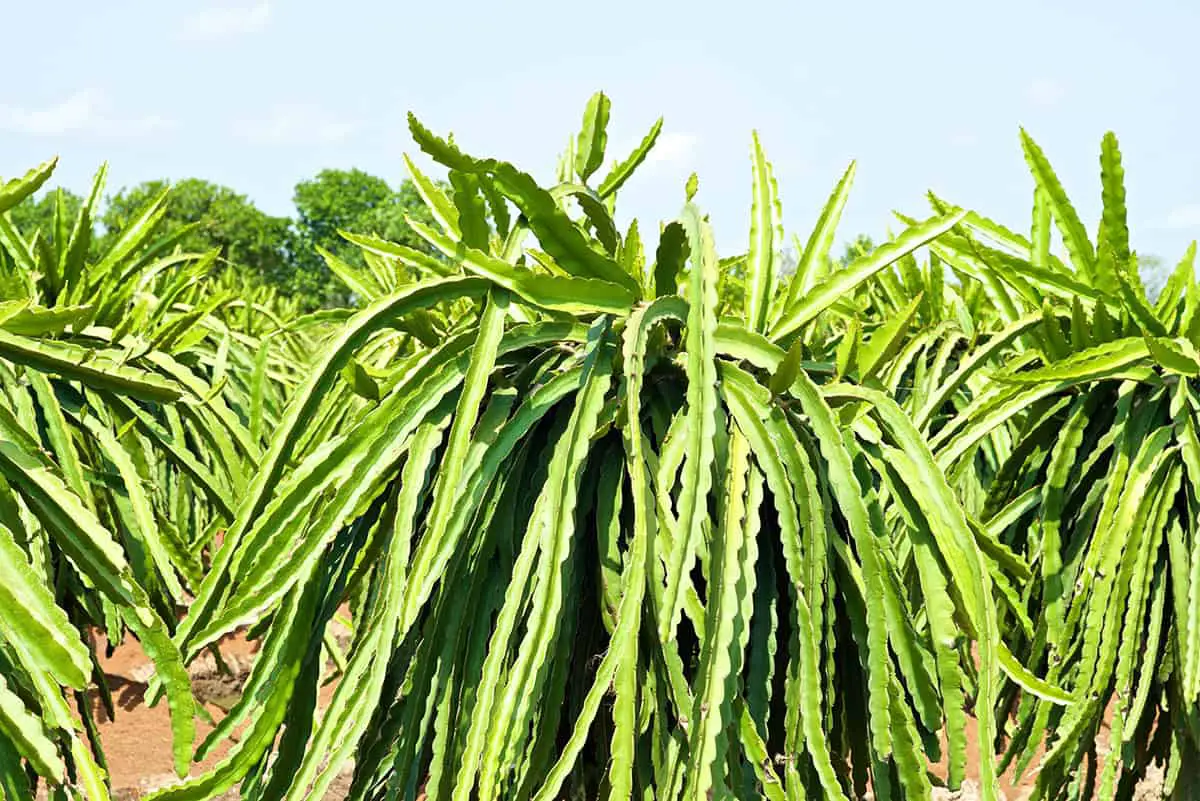
Ideally, provide your plant with full sunlight, as it helps the plant grow healthy and bear fruit. In tropical and subtropical regions, temperatures between 65°F and 77°F are perfect for your plant’s growth.
However, be mindful of exposing your dragon fruit plant to extremely high temperatures, such as those above 100°F. While it can tolerate warmer temperatures, too much heat may pose risks to the plant’s overall well-being.
Consider the location of your plant to ensure it receives sufficient light. For instance, placing the plant near a window or in an open space can help maximize its exposure to sunlight. If you’re growing your dragon fruit plant outdoors, make sure it has access to direct sunlight for the majority of the day.
Soil
Dragon fruit plants thrive in well-draining, fertile soils. The first step in preparing the soil for your plant is to assess its composition. In regions with sandy soil, such as Florida, consider removing a 3 to 10-ft diameter ring of grass sod before planting. This allows for easier root expansion and improved water retention.
Next, dig a hole 3 to 4 times the diameter and 3 times as deep as the container the pitaya plant came in. A larger hole facilitates root expansion and eases its access to the surrounding soil.
To further enhance the soil, add organic matter such as compost. This will increase water-holding capacity and nutrient availability.
Keep in mind that dragon fruit is sensitive to overly wet or waterlogged conditions. Ensure the planting site has good drainage to prevent root rot issues. Additionally, aim for a soil pH between 6 and 7, which provides ideal growing conditions for your plant. If you are uncertain about your soil’s pH, test kits are available at many garden centers or through online retailers.
Footnotes
Watering
Aim to provide adequate moisture to keep the soil damp, but not saturated. Overwatering can lead to root rot, so it’s crucial to maintain well-drained soil.
Dragon fruit plants prefer well-draining fertile soils, significantly reducing the overwatering risk.
You should also pay close attention to the plant’s growth stage. During its active growth phase, water your dragon fruit plant more frequently than when it is dormant. Remember that the frequency of watering also depends on your location’s climate: plants in hotter and drier areas require more frequent watering.
It is vital to adjust your watering routine based on weather conditions. For instance, if there is prolonged rainfall, you may need to reduce watering to prevent excessive moisture. On the other hand, water your dragon fruit plant more often during hot, dry weather to compensate for moisture loss through evaporation.
Temperature and Humidity
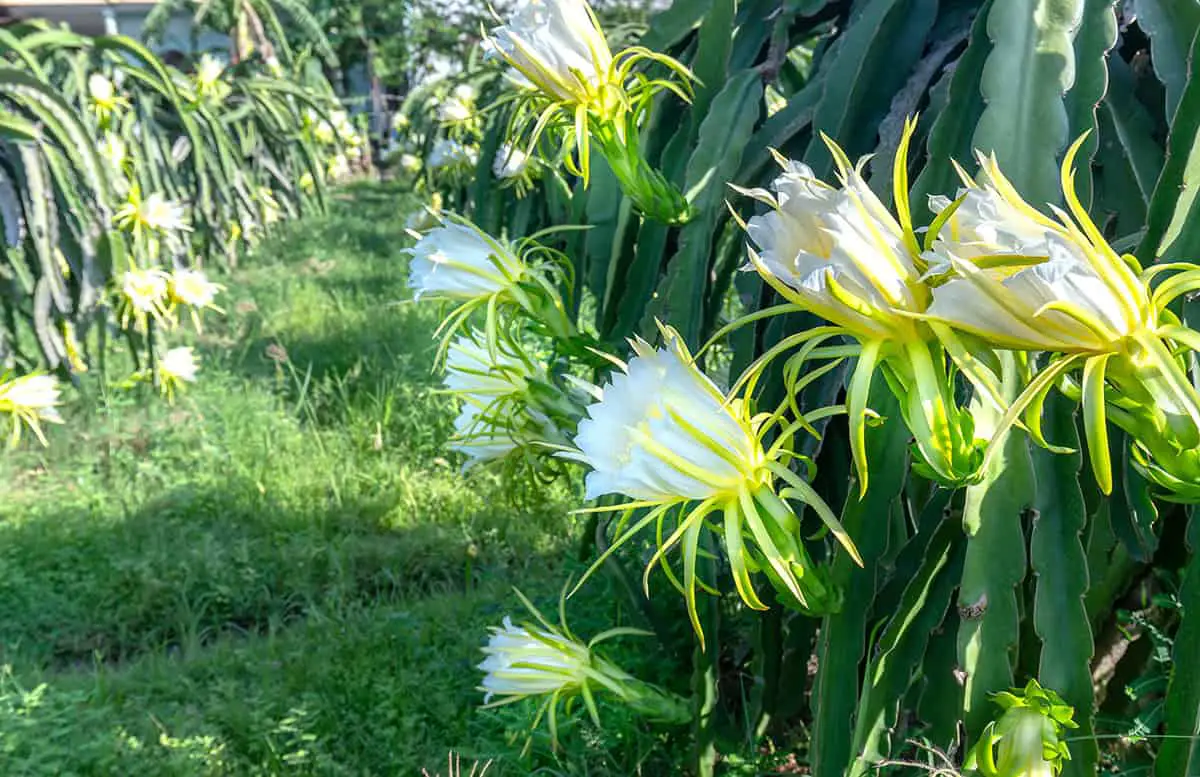
Dragon fruit thrives best in tropical and subtropical weather, with temperatures ranging from 65°F to 77°F. However, these plants can also tolerate warmer temperatures up to 100°F.
In terms of humidity, dragon fruit plants can be sensitive. To maintain optimal fruit quality, it’s crucial to store the fruit at higher relative humidity and inside perforated plastic bags. This can reduce fruit weight loss from water evaporation. For instance, at 41°F and 50°F, fruit weight loss can be as low as 0.05% per day.
Monitoring temperature and humidity will not only preserve the quality of your fruit but will also provide a healthy environment for your plant to grow and produce optimal harvests. Remember to watch for signs of distress related to extreme temperatures or humidity fluctuations, and adjust your plant care accordingly.
Fertilizer
A balanced mix of nitrogen, phosphorus, and potassium (NPK) is essential for optimal growth. Applying NPK fertilizer with a 540g N, 310g P2O5, and 250g K2O per plant ratio results in a greater number of fruits.
Additionally, organic manure helps improve soil fertility. Applying organic manure every three to four months enhances the nutrient uptake for your dragon fruit plant. Adding compost or well-rotted manure to the planting hole helps maintain the required nutrients.
Providing the right amount of water is crucial in tandem with fertilizers. The dragon fruit plant thrives in well-draining soil, as it enables the fertilizer to be readily available to the plant. However, make sure not to overwater, as it can cause root rot and other issues.
Propagation
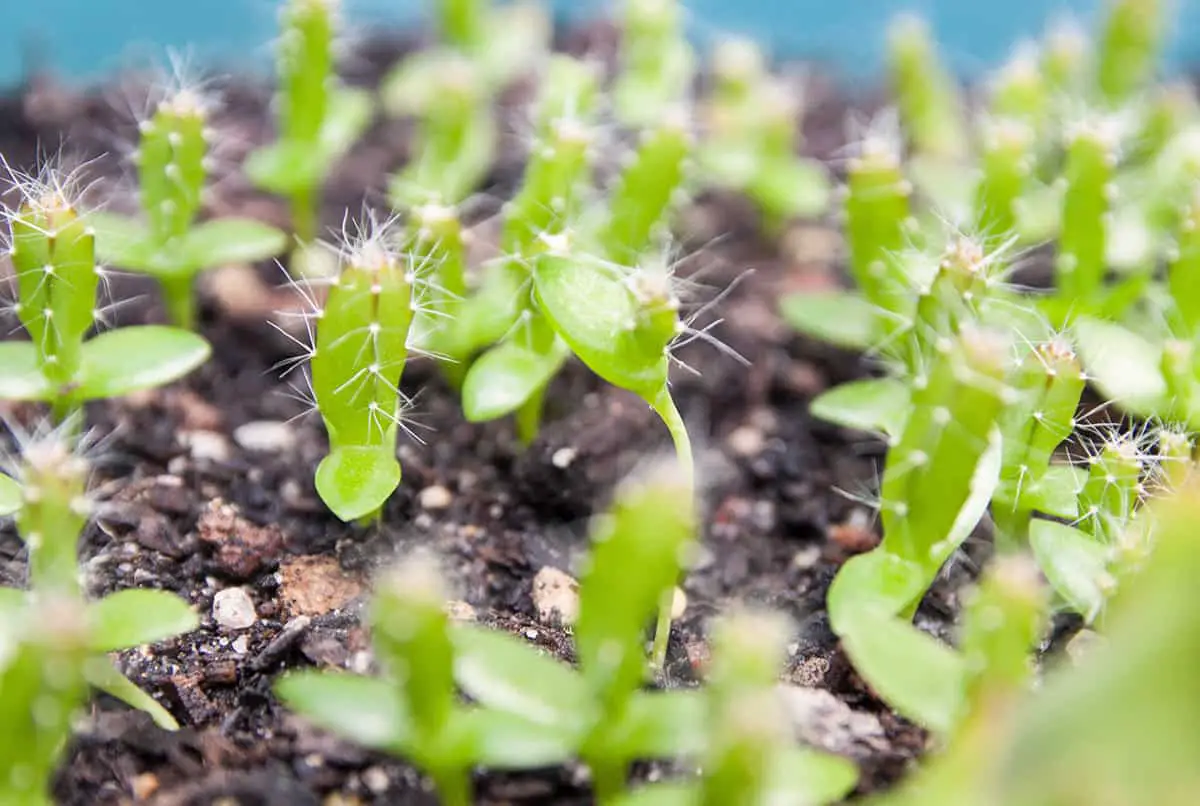
The preferred method for propagation is through stem cuttings. You can obtain cutting segments that are 6-15 inches and begin by treating the base of the cutting with fungicide. This step helps prevent infections.
Before planting the treated cutting, allow it to cure and dry for 7-8 days. This resting period promotes successful growth and establishment in your garden. Remember that the ideal temperature range for dragon fruit growth is between 65°F and 77°F.
Proper planting techniques also play a significant role in the success of your dragon fruit plant. Start by preparing a hole that’s three to four times the diameter of the container in which your plant came. Don’t forget to remove any grass sod within the 3 to 10-ft diameter area to create the space for your plant. This large hole loosens the soil around the plant, encouraging root expansion.
As your dragon fruit plant grows, pay close attention to its care and maintenance. With dedication and precise propagation techniques, you’ll be on your way to growing a thriving dragon fruit plant in no time.
Pruning
Proper pruning is essential for the healthy growth of your dragon fruit plants and increased fruit production.
In the first year, focus on encouraging upward growth. This allows your dragon fruit to establish a strong structure on the trellis system. University of Guam recommends pruning individual plants to achieve this goal.
Pruning for your dragon fruit plants can also involve removing dead or unhealthy branches, as well as trimming back excessive growth. This ensures that your plant directs its energy into fruit production and maintains a manageable size. Make sure to use sanitized pruning tools to reduce the risk of disease transmission. Clean, smooth cuts are crucial to avoid damaging the plant’s tissue.
During the fruiting season, pay attention to branch distribution and fruit load. Removing any overcrowded or entangled branches can improve air circulation and ensure adequate sunlight for all parts of the plant, which are essential for healthy growth and fruit development. Additionally, retaining a balanced fruit load helps your plant focus on producing larger, good-quality fruits.
Potting and Repotting
When you start growing a dragon fruit plant, choose a large container with drainage holes to accommodate its growth. Ideal potting soil is a well-draining mix, like a cactus mix that retains some moisture but doesn’t become waterlogged. You may also add perlite or sand to improve drainage.
As a climbing cactus, the dragon fruit plant benefits from a support structure in the pot to help it grow vertically. Bamboo stakes or trellises work well for this purpose. Be careful handling the prickly stems while you secure them to the support.
Repotting your dragon fruit plant becomes necessary when it outgrows its current container. To repot, gently remove the plant from its container and inspect the roots. If the plant is strongly root-bound, cut away about 1/2 inch of soil and root mass, trimming any circling roots. Select a new, larger container and fill it partially with fresh, well-draining soil. Place the plant in the new container and fill the remaining space with soil, ensuring the plant is sitting at the same depth as it was previously. Water well after repotting to help settle the soil around the roots.
Keep in mind that dragon fruit plants require a tropical or subtropical climate for optimal growth. If you live in an area with colder weather or want to grow them indoors, make sure they receive adequate light and warmth.
Common Problems & Troubleshooting
When growing dragon fruit plants, you may encounter some challenges. One common issue is stem and fruit canker. To prevent this, make sure your plant receives proper care, such as sufficient water and a balanced fertilizer.
Another concern for dragon fruit growers in Florida is the presence of pests and beneficial insects. Be vigilant and monitor your plant for any signs of pests. If you spot an infestation, apply appropriate treatments to protect your dragon fruit.
Moreover, the sandy soil in Florida can be challenging for the proper growth of your plant. To alleviate this, consider amending the soil to improve its nutrient and water retention capacity. Always remove a 3-10 ft diameter ring of grass sod and dig a hole 3 to 4 times the diameter and depth of the container your pitaya plant came in.
Lastly, be mindful of the temperature, as dragon fruit plants prefer tropical and subtropical weather with temperatures between 65°F and 77°F. They can tolerate temperatures up to 100°F, but providing shade during extreme heat will help ensure optimal growth.
Dragon Fruit Varieties
Hylocereus Undatus
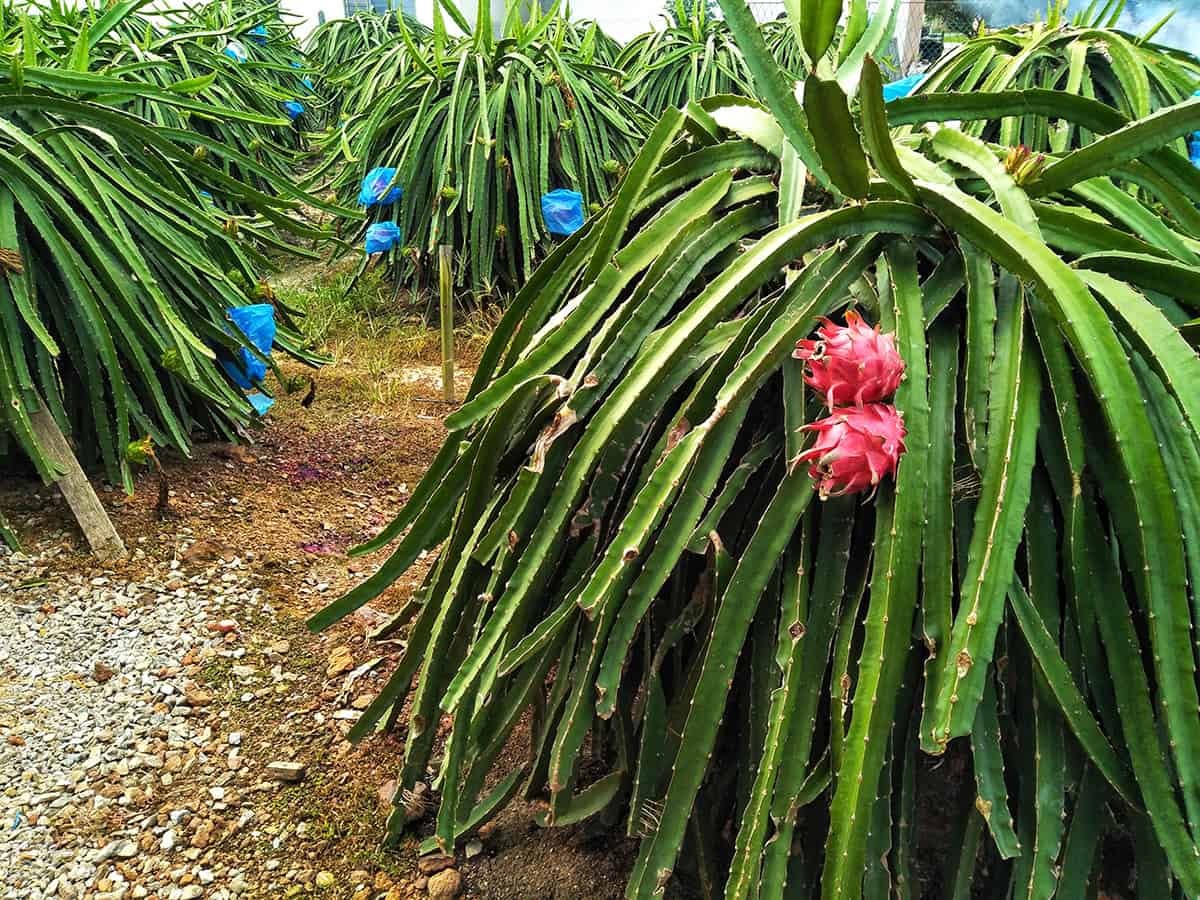
Hylocereus undatus is the most common variety of dragon fruit. It presents a bright pink or red skin with white flesh and tiny black seeds. You’ll often find this variety in local markets as it’s popular for its sweet and refreshing taste. It flourishes in tropical and subtropical climates.
Hylocereus Costaricensis
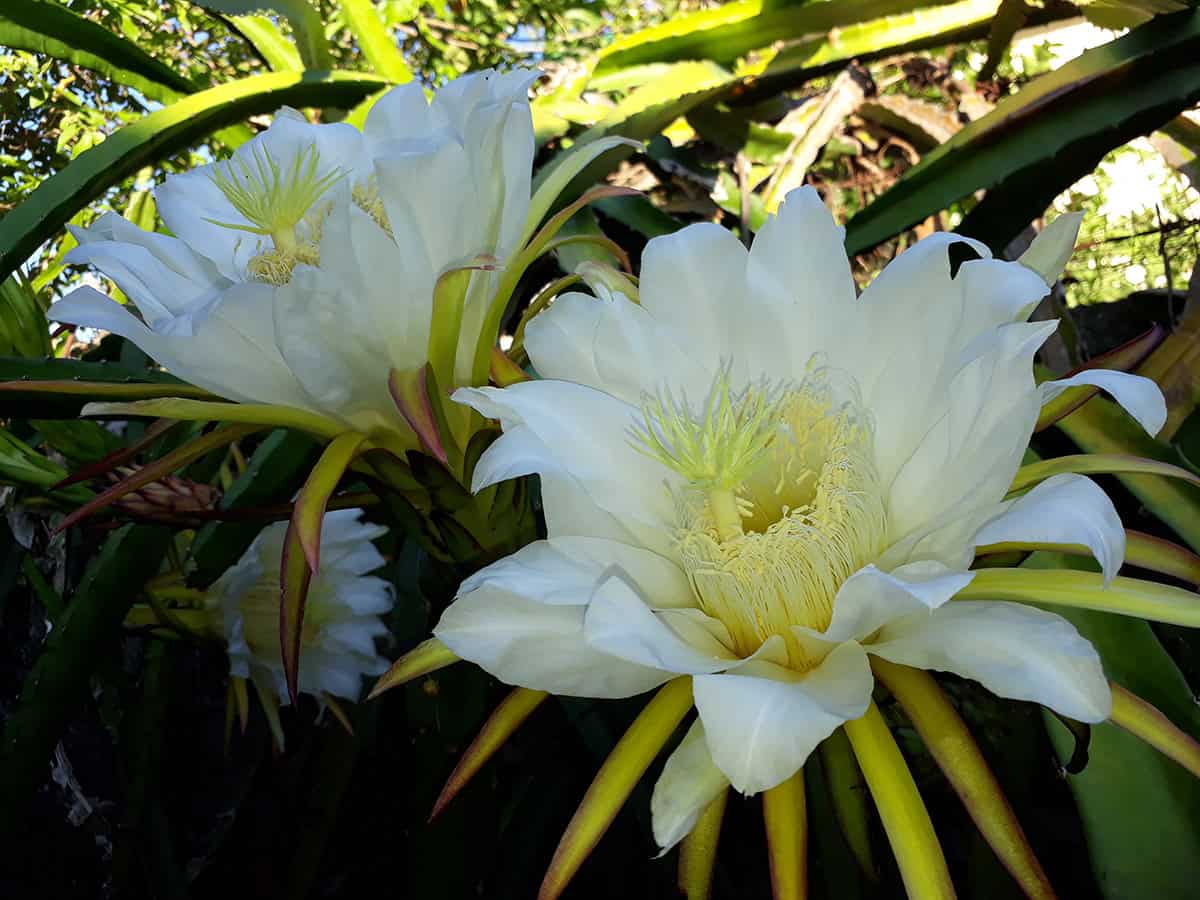
Hylocereus costaricensis is another popular variety, known for its red or purple-skinned appearance and dark red flesh. This fruit offers a deeper and sweeter taste compared to the Hylocereus undatus. It also grows well in tropical and subtropical regions.
Hylocereus Megalanthus
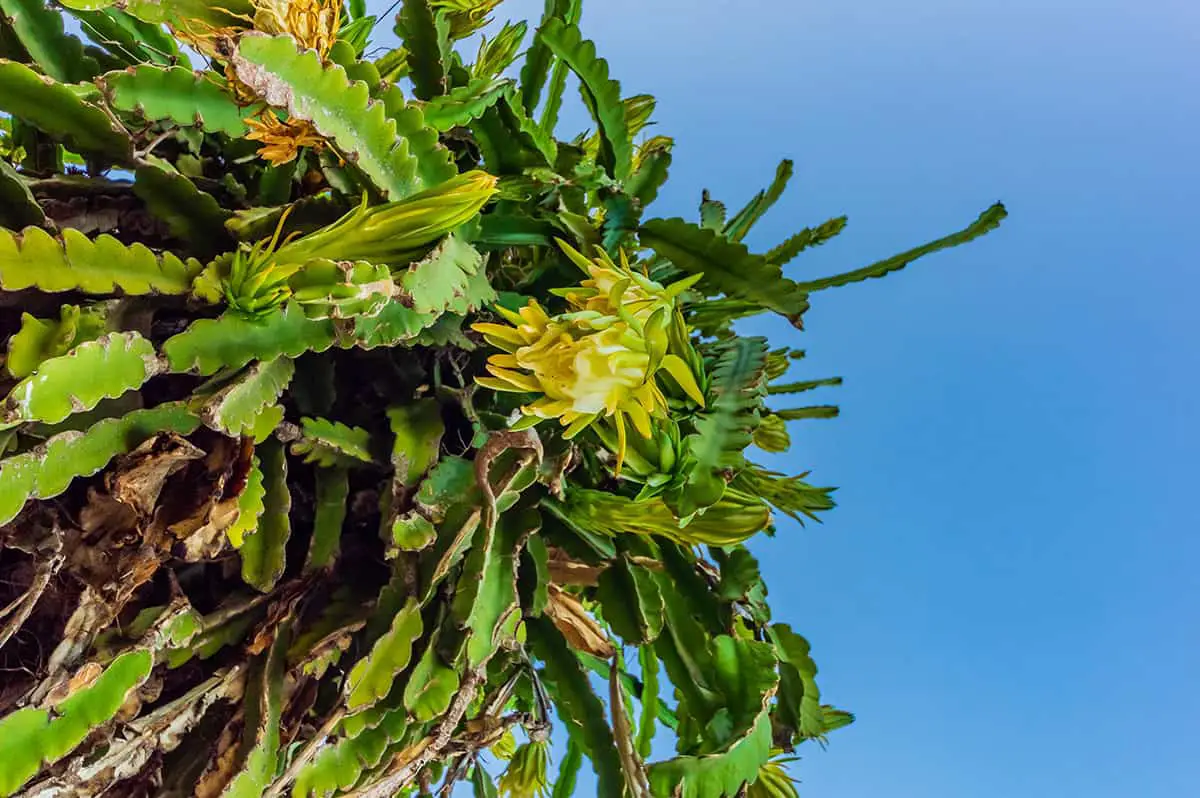
Also known as yellow dragon fruit, Hylocereus megalanthus stands out with its vibrant yellow skin and white pulp. It has a sweeter taste compared to the other varieties, and its texture is considered smoother. This type is more cold-tolerant than most other dragon fruit varieties.
Hylocereus Guatemalensis
Hylocereus guatemalensis, a rare variety, showcases pink skin with white inner flesh. Its texture is similar to Hylocereus undatus, but it is less commonly found in markets. This variety prefers a more humid climate for optimal growth.
Hylocereus Ocamponis
This unique variety of dragon fruit, Hylocereus ocamponis, bears a reddish-pink skin with a red or purple pulp. It has a distinct sour taste, which might not appeal to everyone. Like other Hylocereus species, it thrives in tropical environments.
Hylocereus Monacanthus
Hylocereus monacanthus, also known as the red pitahaya, stands out with its bright red skin and pulp. It also has a slightly sweet and refreshing taste. When growing this variety, ensure it receives adequate sunlight and fertile soil to flourish.
Hylocereus Triangularis
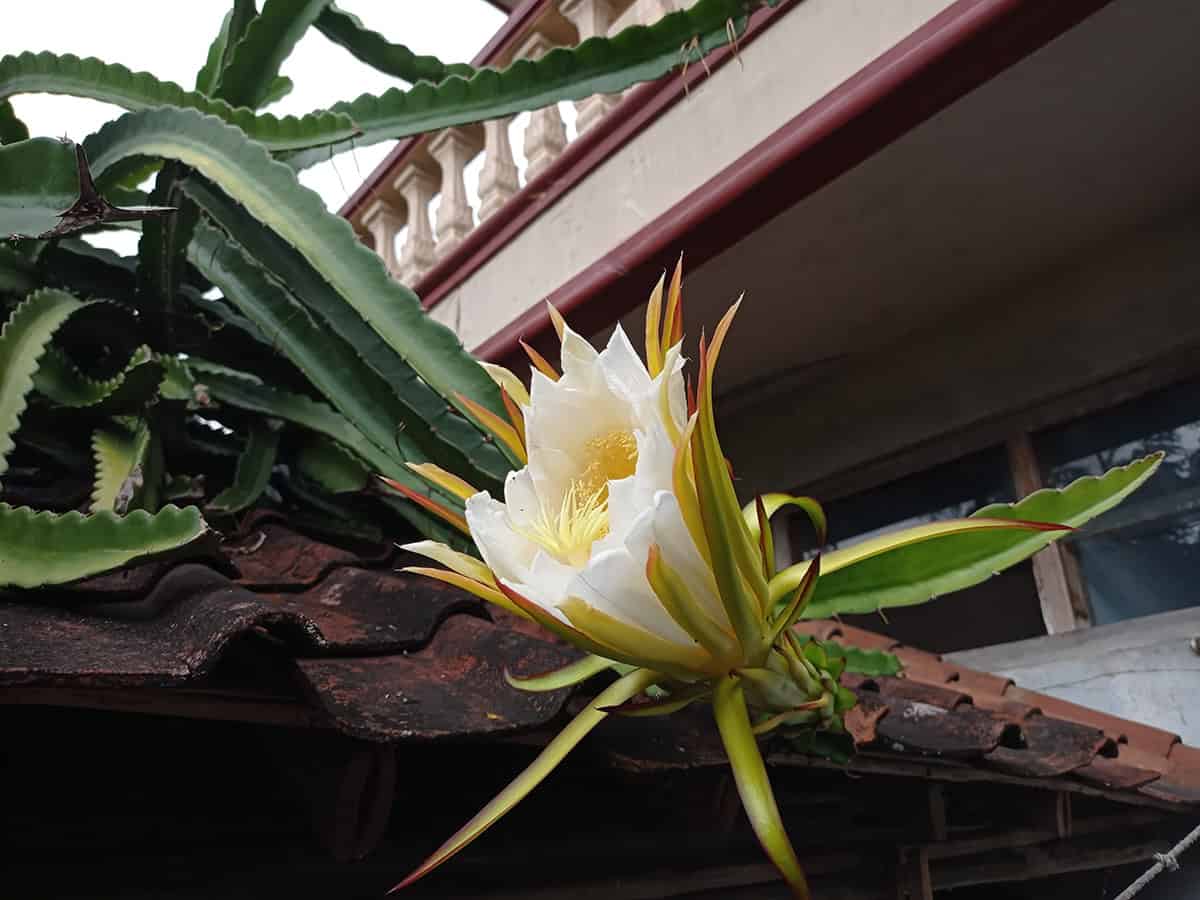
The last variety, Hylocereus triangularis, showcases a dark red skin color and white flesh. Its taste is relatively mild and not as sweet as other varieties. It still requires tropical and subtropical climates for optimal growth, similar to its counterparts.
